| |
|
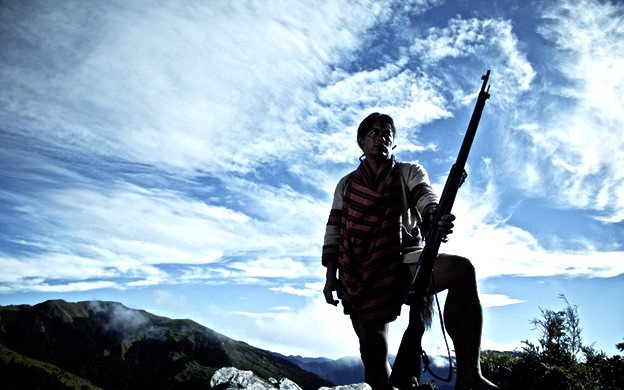 |
 |
|
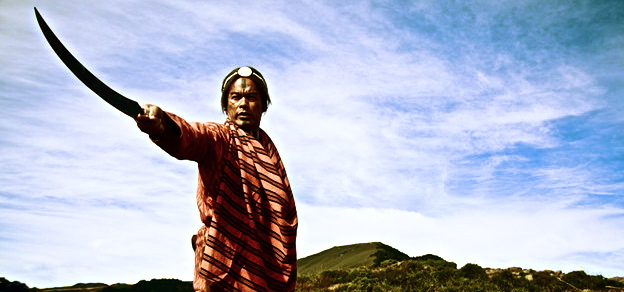 |
|
Movie Trailer
The US$25 million production, set in the 1930s, is
ultimately about the spiritualism of an indigenous headhunting tribe in
Taiwan -- the Seediq.
The native people believe in bloodshed as the ticket into their version
of Heaven. Only by taking an enemy's head in battle can one cross the
mythical rainbow bridge into the heavenly hunting grounds.
It follows the Seediq tribe before and after the occupation of their
lands by Japanese imperial forces.
Life before the Japanese occupation is passionate and wildly beautiful;
battles fought under blood-red sakura blossoms, pig hunting along
pristine mountain streams, lusty boozing on mountain passes.
Under Japanese colonization, life for the Seediq is robbed of its
meaning. Hunting grounds are logged, indigenous culture is deemed
barbaric and young warriors are denied the rights to earn their
headhunting tattoos -- their passport across the rainbow bridge.
“In death, enemies become friends,” says protagonist Mouna Rudo, the
Seediq chief who bows to pressure to lead an uprising, based on a real
incident in Wushe. The rebellion thus becomes a spiritual decision.
Taiwan Indigenous Culture
|
|
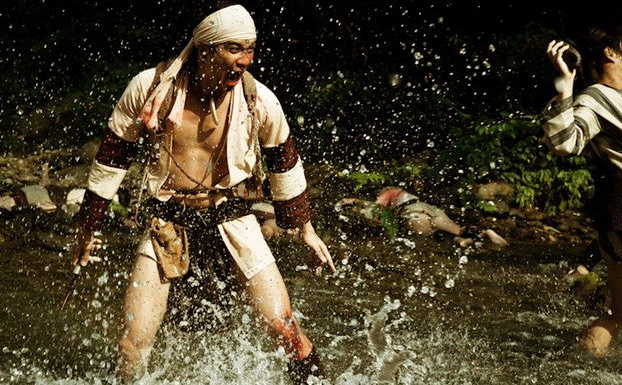
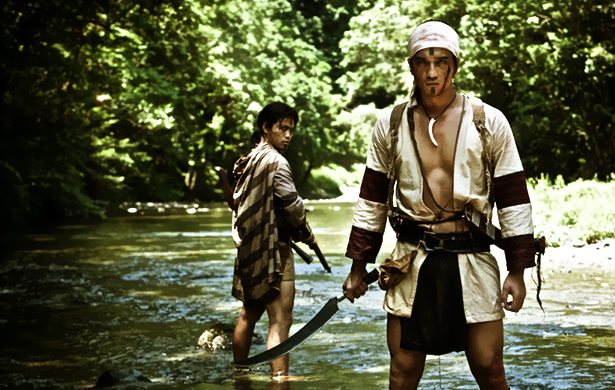 |
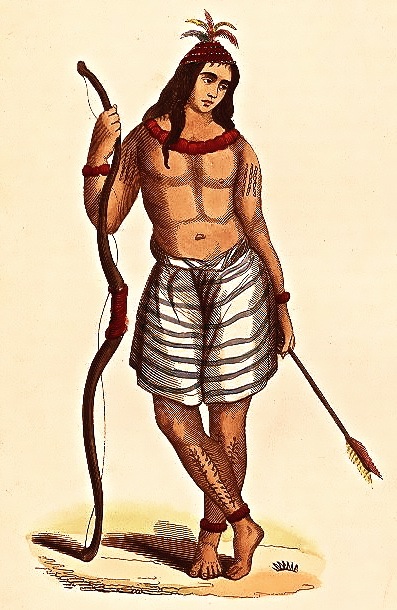 |
 |
|
The Rover Incident of 1867
March 12, 1867, the American merchant ship Rover
hit a reef near Oluanpi, Taiwan's southernmost point, and drifted north
towards what is now Kenting. The ship soon sank, but the Captain, his
wife, and the crew got off in small boats. In revenge for previous
killings of local aborigines by foreigners, the local aborigines (called
the Koaluts at the time) killed everyone who made it to shore, excepting
one Chinese sailor. That sailor found his way to Takao (Kaohsiung),
where he notified the British consul, who in turn notified the British
ambassador in Beijing, who passed the information along to the US
ambassador there.
The British dispatched a gunboat from Taiwanfu (Tainan)
in late March to search for survivors. The aborigines descended on the
sailors searching the area, driving them back to the ship, which
responded by shelling them, and then leaving. |
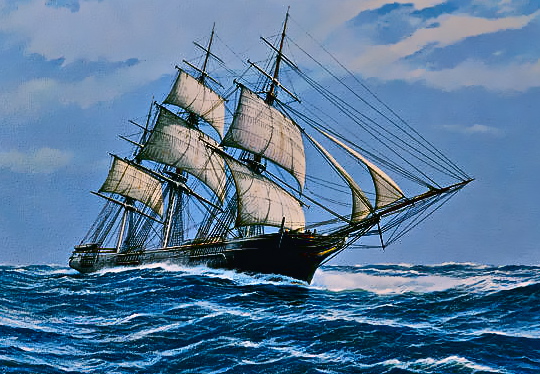 |
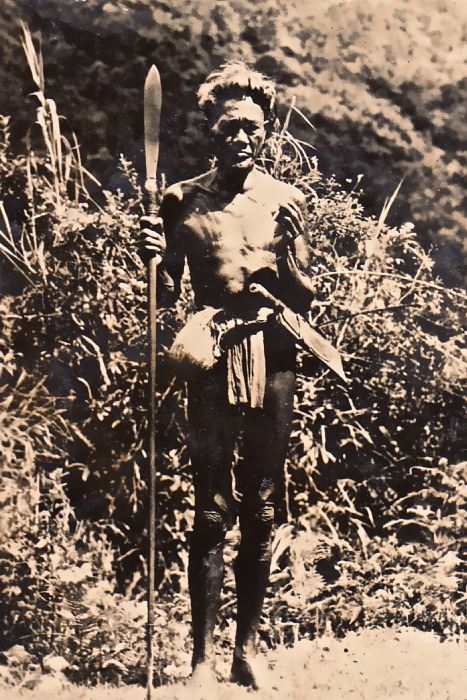 |
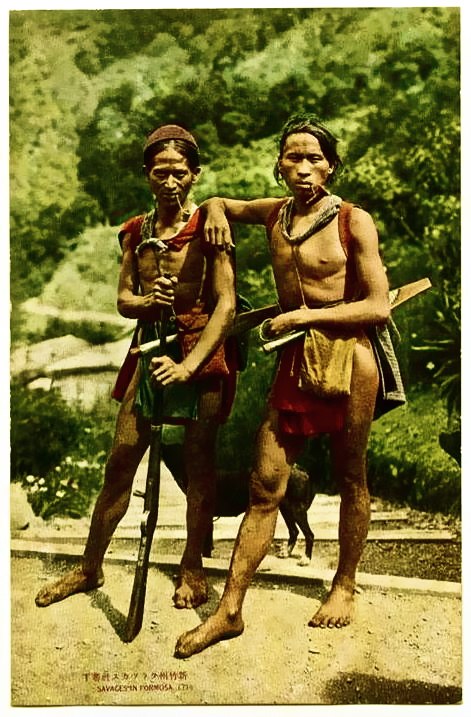 |
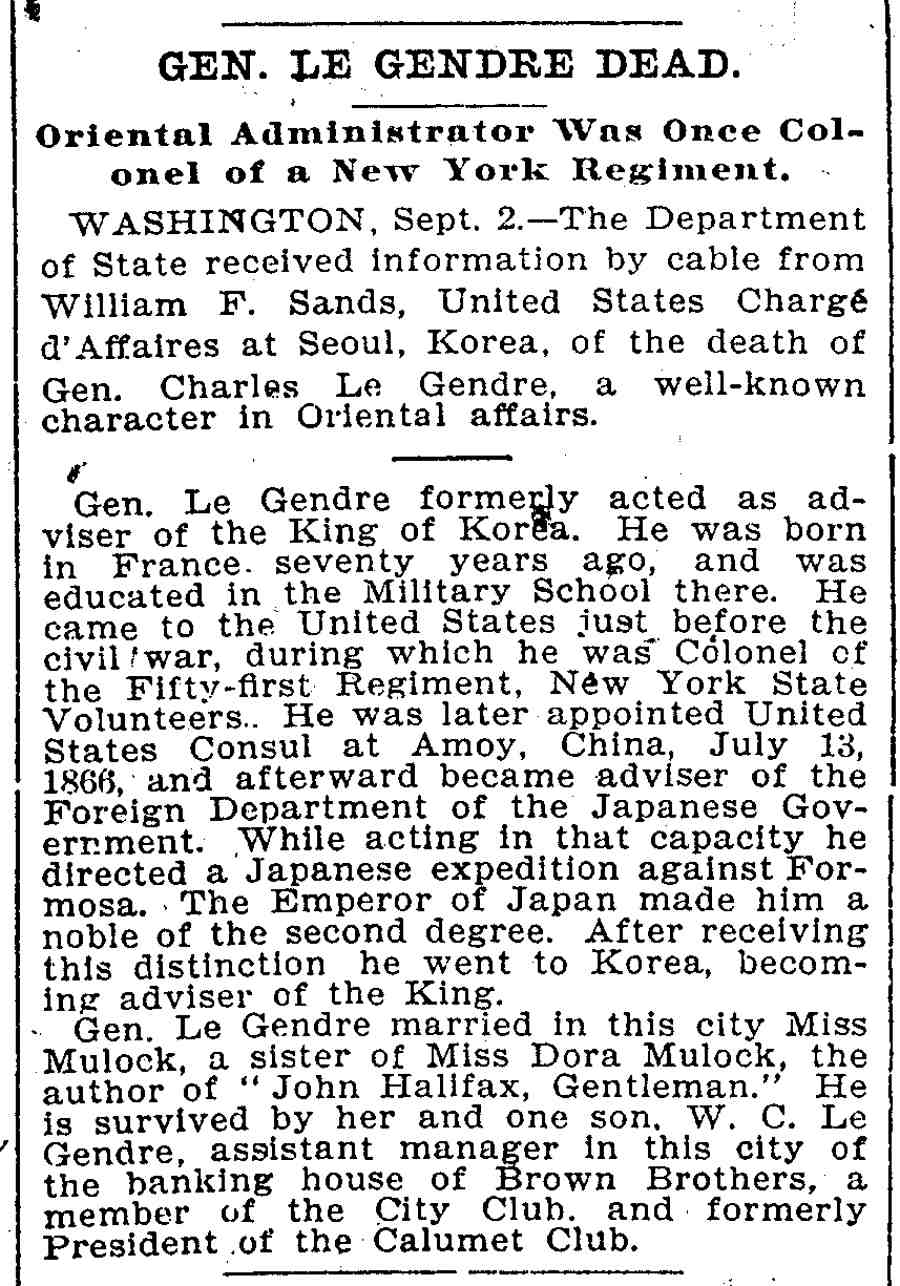 |
Charles William Le Gendre
Early in April of 1867 the US Consul in Amoy, Charles
William Le Gendre, traveled to Foochow to see whether he could persuade
the Ching authorities to act. The governor-general gave Le Gendre a
letter of introduction to the Ching official in Taiwanfu (Tainan). Le
Gendre arrived in Taiwan on April 18, where Ching authorities evinced
little interest in the incident. They told Le Gendre that the aboriginal
districts lay outside their authority.
Months went by as diplomatic messages were exchanged, and finally on
June 13, 1867, two ships, Hartford and Wyoming, along with 181 officers,
sailors and marines, were dispatched by the Americans to punish the
"savages", accompanied by the British consul at Takao and a couple of
British citizens. Davidson complains that this was far too late, since
even if some Americans had survived, it would be unlikely that any were
still alive after so long a delay.
The marines and sailors landed on June 19th. The heat was overwhelming
and the troops were felled by sunstroke and exhaustion. "The savages,"
wrote the commander of the land expedition, "dressed in clouts, their
bodies painted red, were seen through our glasses, assembling in parties
of ten or twelve on the cleared hills about two miles distant." |
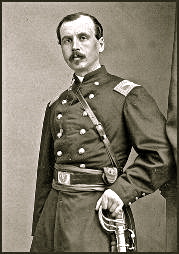
General Le Gendre
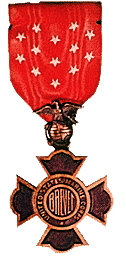 Brevet Medal
|
|
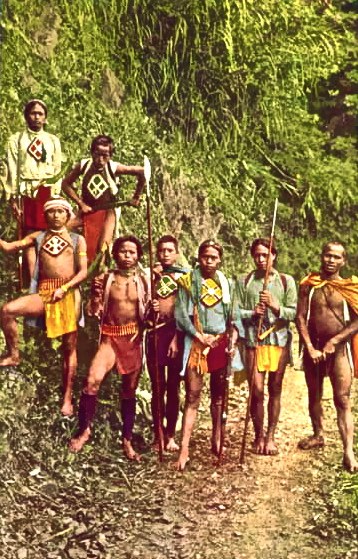 |
The aborigines sensibly fought from cover on a hill above the
Americans, remaining invisible to the American force but keeping the
sailors and marines under constant musket fire. "It was impossible to
tell the position of the enemy until we saw the smoke of his pieces, and
we were obliged to fire at the flash. We were in plain sight, an open
mark for the enemy, while they were hid in this undergrowth, into which
we could not see ten feet," complained one of the officers in the NY
Times. Forney was in charge of skirmishers deployed in front of the US
troops in this battle. After several hours of plunging into ambush,
the first battle casualty occurred when Alexander Slidell McKenzie,
second in command of the expedition, was killed leading a charge uphill
against the aborigines. Despite the Sharp's rifles that half the company
possessed (aborigines in southern Formosa had fled from volleys of the
new breech-loading rifles of the Prussian steamer Elbe in 1860, the
first use of the revolutionary new Prussian weapon in combat), they were
unable to drive off the locals. Instead, the "Pirates of Formosa" as
they were styled in the NY Times, had driven off the expedition in
defeat and disarray. The retreating Americans made up for the defeat by
burning a few huts on their way back to their ships.
The aborigines, observed the US ground commander, |
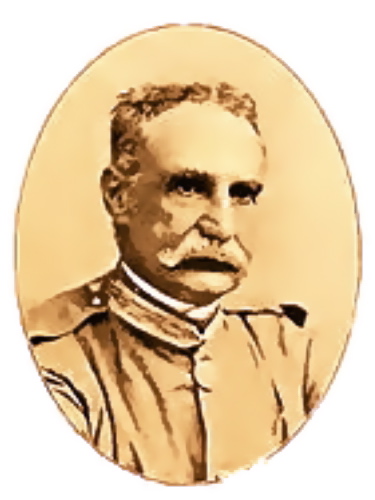
Captain James Forney
President U. S. Grant.
Washington City, April 13, 1869
To the Senate of the United States:
I nominate Capt. James Forney, of the Marine Corps, to be brevet major
in said corps for gallantry in action against the savages of Formosa, to
date from the 13th of June, 1867 |
| displayed "a stratagem and courage equal to our native Indians. After
this ineffectual attempt to bring the Koaluts to reason...."
Below, Marines in action against the "savages of Formosa"? James Forney
later became a civil war hero and rose to high rank in the Marines
before being court-martialed for corruption. |
|
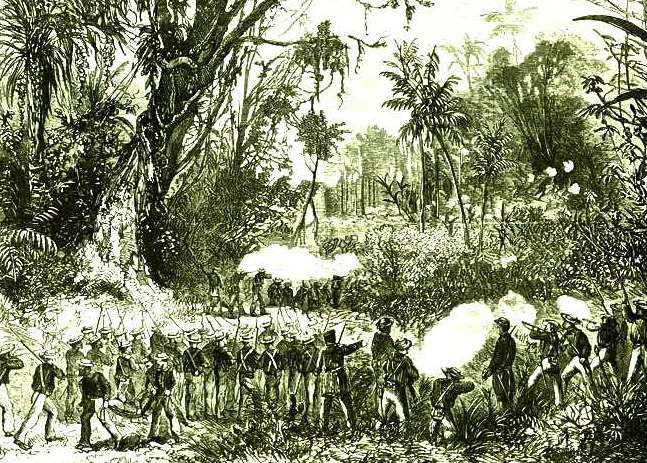
Attack of the United States Marines and Sailors on the Pirates of the
Island of Formosa, East Indies |
A second attempt to "reason" with the aborigines was made by Le
Gendre. In September of 1867 he arrived in person on Formosa to take
charge of a punitive expedition with a large force, which the Ching
Viceroy had promised to send. Arriving with orders in hand from the
Ching authorities in China, he compelled the Ching general on Formosa in
charge of the island's troops to supply him with the troops, though only
500 of the promised 1,000 were delivered, and off he marched into
southern Taiwan.
Le Gendre had been a general in the civil war and was an experienced
leader of troops as well as an experienced diplomat. He basically
assumed control of the expedition from the Ching general in charge, and
led it on an exemplary march across hill and dale, road building along
the way, entirely free of violent encounters. |
| "We spent the night in a sugar mill, and left at daylight for
Pangliau, which we reached the same night. Pangliau extends along the
shore at the summit of an arc of a circle, forming a bay, and is,
therefore, too open to be secure. The products are rice and peanuts.
Women pound the rice and till the fields, while the men are entirely
taken up with fishing. To the east, at a cannon shot from the sea, rise
abruptly from the valley, high mountains, the exclusive domain of the
savage aborigines, who receive from the Chinese (or half-caste)
population a certain share of their crops, as a royalty for the lands
they have rented to them forever. There for the first time we notice
that none leave the village without being armed." Why did they wait at
Pangliau? They were having a road built over the mountains, which they
promptly set out on once it was completed. Despite predictions of
imminent attack, the expedition skillfully blocked the local passes with
troop detachments and proceeded unmolested into the aboriginal Demenses.
Le Gendre proved himself equal to the daunting tasks before him. He
recognized that retaliation was pointless and it would be better to
obtain a promise of future protection of shipwreck victims from the
local aborigines, which he described as consisting of 18 tribes led by a
paramount leader named Tooke-tok. It was US policy, he wrote, “to
sacrifice a vain revenge (which might be hereafter used as a pretext for
retaliation) to the incomparable advantage we would gain in securing
ourselves against the recurrence of crimes we had come to punish.” Le
Gendre also realized that the aborigines, far from acting out of some
savage preference for violence, were aggrieved parties retaliating for
attacks on them by foreigners. Finally, the large body of troops he had
brought represented muscle that could be deployed in punishment should
negotiations break down or agreements be broken.
Le Gendre was able to negotiate an agreement which saw attacks on
shipwreck victims in the vicinity fall. This agreement included a
provision calling for the Ching to build a "fortified observatory at the
southern bay" which would eventually evolve into the walled lighthouse
at Oluanpi. |
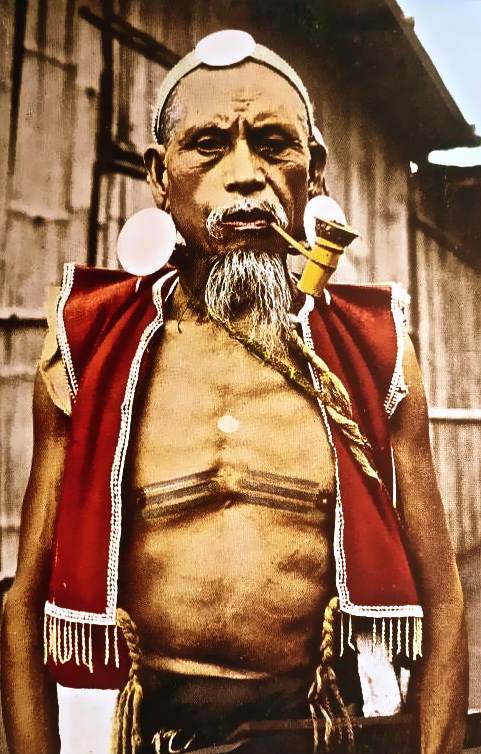 |
Le Gendre saw a fort in the area as an urgent necessity which would
enable the Ching to assert their authority over the area, command
respect from the Koaluts, and provide a safe haven for the many victims
of shipwrecks in the area. In response to Le Gendre's demands, the Ching
General Liu erected a walled enclosure in the area in just two days.
The mission was successful in that the local
aborigines often helped shipwreck victims and notified the Ching
authorities of their existence. But the "confederation" of local peoples
fell apart -- if indeed it had ever existed -- and Tooke-tok found it
difficult to exert his authority.
After "a hard trip of nearly two months", Le Gendre returned to Amoy. In
1874 he would return to the area with a Japanese punitive expedition as
its advisor, along with several other Americans. The Japanese were sent
to punish the aborigines for the murder of 54 Okinawan sailors by
aborigines of the Mudan area in 1871. The enterprise was doubly
colonialist, first against the aborigines, and second, against Okinawa.
By "avenging" those deaths, the Japanese would demonstrate that they
spoke for and acted on behalf of, the Okinawans as their rulers. That
expedition would lead to the famous Battle of the Stone Gate, not far
from modern Checheng. |
|